
As a homeowner who recently had new shingles installed on my roof, I couldn’t help but wonder: do new shingles take time to settle? It’s a question that many people may have, and one that deserves a closer look.
In this discussion, we will explore the reasons behind the settling process of new shingles, common concerns that arise during this period, and the factors that can affect the time it takes for them to fully settle.
So, let’s dive into the world of roofing and uncover the mysteries of shingle settlement together.
Reasons why new shingles need time to settle ensure their durability and performance. Installation requires time for the shingles to adhere to the roof. Shingle manufacturers recommend giving shingles time to settle and bond with the roof during installation. This settling period allows adjustments and secures the shingles.
Shingles also adapt over time. Shingles face extreme temperatures, moisture, and other environmental factors. Allowing them to settle reduces the risk of cracking, warping, or other damage. This is crucial in areas with changing weather because shingles need time to expand and contract without breaking.
The shingle adhesive needs settling time to fully activate. Shingle adhesive takes time to cure and strengthen. This keeps the shingles in place during high winds and rain.
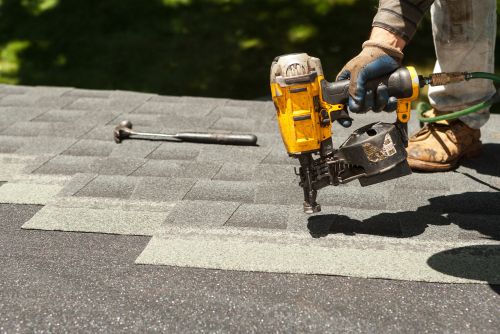
After giving new shingles time to settle and bond with the roof, it’s important to understand how they perform best. Because they need to fit the roof, new shingles take time to settle. Shingles can be easily manipulated during installation due to their flexibility. Time is needed to settle into their final form.
Warm weather aids in settling. Asphalt shingles need warm weather to soften and adhere. Warm weather seals the shingles and bonds them to the roof, making them weatherproof. For easier installation, install new shingles in the warmer months.
Shingles also expand and contract with temperature during settling. It helps them adapt to roof movements and prevents cracking or splitting. When shingles settle, they become more stable and less susceptible to wind, rain, and snow damage.
New shingles’ long-term performance depends on understanding their settling process. Allowing them time to settle and bond with the roof ensures maximum protection and durability. New shingles take time to settle, but the result is a durable roof.
Homeowners may worry about their new roof’s performance and durability during shingle settling. You’re right to worry about the shingles’ settlement and protection. New shingles take time to settle, and there are some common issues that may arise.
Roof appearance concerns are common. Shingles may appear uneven or bumpy. This is especially noticeable in warm weather when shingles expand and contract. Remember that this will go away as the shingles settle.
Shingle sealing is another issue. Shingles are carefully placed and secured to the roof during installation. Some shingles may not adhere to the roof initially. This raises leakage and damage concerns. As the shingles settle and the weather warms, the sealing process will continue, ensuring a secure roof.
New shingles may also worry homeowners about durability. They may worry that settling will weaken and damage the shingles. Please note that shingles are designed to withstand weather, including settling. Regular maintenance and proper installation will prolong the life of the roof.
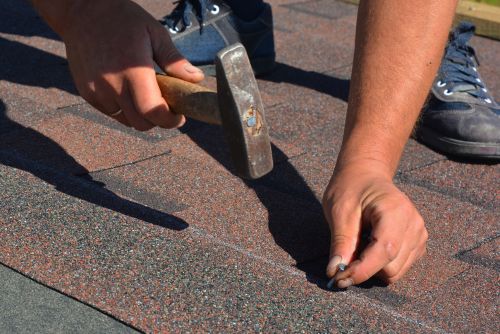
After installation, the shingles take time to settle. How long this settling process takes can affect the performance and durability of your new roof shingles. A week is typical for new shingles to settle. Some important factors to consider during this time are:
Installation quality affects new shingle settling time. Correctly installed shingles settle faster. They’ll lay flat and adhere to the roof. However, poor installation can cause shingles to buckle, lift, or curl, prolonging settling.
Weather can also affect the settling of new shingle. Shingles soften and settle faster in warm weather. This helps them fit the roof. In contrast, cold weather can slow settling because shingles become stiffer.
New shingles’ settling time can also depend on the condition of the roof. Uneven or damaged roofs can affect shingle lay and adhesion. To avoid settling, check the roof before installing new shingles.
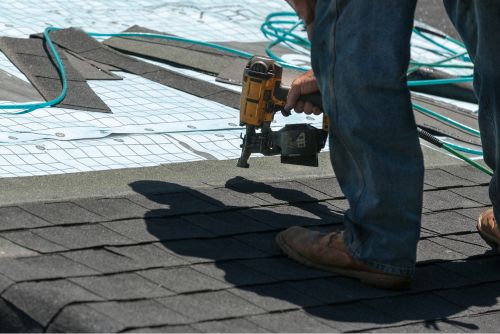
Following proper installation techniques and considering weather and roof conditions will help new shingles settle smoothly. Here are some tips for optimal results:
New shingles settle depending on the weather. Temperature and humidity during installation and the first days after can greatly affect how quickly the shingles settle. This can happen faster in warm weather.
New shingles are flexible and moveable. Warm weather softens shingle asphalt, making it more flexible and settling faster. The adhesive strips on the back of the shingles activate and bond better to the roof surface with heat. This secures the shingles and prevents them from shifting during storms.
However, cold weather slows settlement. Low temperatures stiffen and harden shingles, making roof contouring harder. An uneven or imperfect installation may cause future problems.
Humidity matters too. High humidity can delay adhesive strip drying and settling. Installation temperature and humidity must be balanced to ensure a smooth settling process.
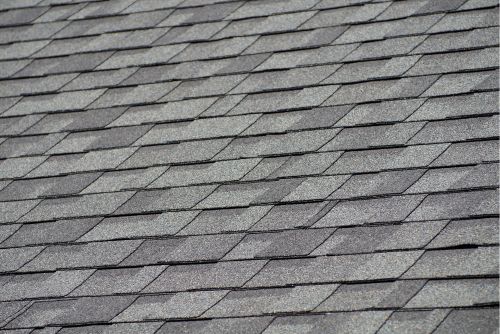
After understanding how weather affects new shingle settling, it’s important to find ways to speed it up. Do new shingles take time to settle? New shingles take time to settle naturally, but you can speed up this process and enjoy a fully settled roof sooner. Innovative ways to speed up new shingle settling:
These signs indicate that my new shingles have settled. New shingles need time to adjust to their new home. It may seem like a waiting game, but there are signs that your shingles have settled.
A smooth, uniform roof surface is a sign that your new shingles have settled. After installation, you may notice minor flaws. After the shingles settle, these imperfections will fade, leaving a flawless roof.
The absence of strange noises during warm weather indicates that new shingles are settling. As the shingles adjust to temperature changes, you may hear creaking or cracking. They’ll settle into the warm weather when these sounds disappear.
In addition, a well-established roof will perform consistently. You’ll notice that your new shingles endure heavy rain and strong winds without damage or lifting. This resilience shows that your shingles have settled and are protecting your roof.
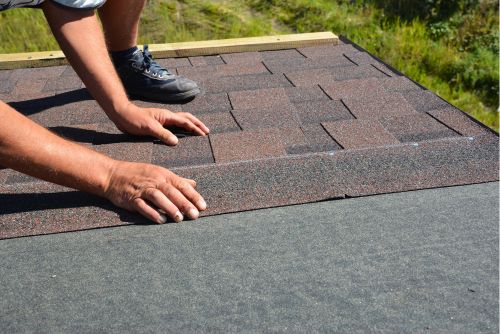
Your new shingles may not settle properly, but there are solutions. New roofs with unsettling shingles can be frustrating. To prolong your roof’s life and effectiveness, stay calm and act. If your new shingles don’t settle, try these:
Proper shingle installation is key to fixing new shingles that won’t settle. Shingles must settle properly on your roof during installation. Adding new shingles on top and hoping for the best isn’t enough. Shingle installation requires planning and precision.
Shingle alignment is crucial to proper installation. This means each shingle should be straight and overlap properly. If shingles aren’t aligned, they may not settle properly, causing leaks and premature wear.
Shingles must be securely fastened to the roof for proper installation. Nails or staples should be placed in the designated areas on each shingle. Over time, improperly fastened shingles may shift or come loose, causing uneven settlement.
Shingle installation also requires proper order. Following the manufacturer’s instructions, start at the roof’s base and work up. Shingles installed out of order can settle improperly and damage the roof.
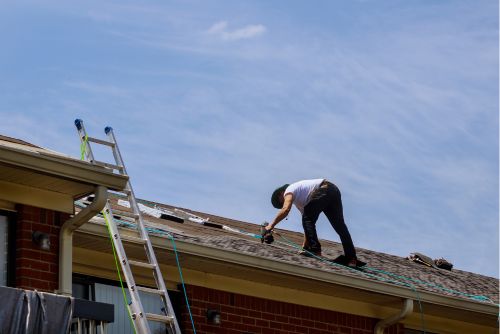
To prevent problems and prolong your roof’s life during shingle settling, inspect and maintain it regularly. Shingles settle over time, so this period is crucial for your new roof’s stability and durability. These maintenance tips will help you maintain your roof during settling:
Let’s address some common concerns about new roof shingles settling. How long new shingles settle is a common question. New shingles settle differently depending on type, weather, and installation.
First, new shingles need time to settle in. This settling process bonds the shingles, creating a strong roof. Most recommend giving shingles a few weeks to settle. Warmer weather helps the shingles soften and conform to the roof’s surface, which speeds up settling.
Another common question is whether installation affects new shingle settling. Answer: yes. Shingles must be properly installed to settle. Poorly installed shingles may not settle evenly, causing future problems. To ensure a smooth settling process, hire a professional roofing contractor with shingle installation experience.
Do new shingles take time to settle? It’s important to allow new shingles time to settle after installation. During this period, it’s normal for some concerns to arise, but proper installation and maintenance can help ensure a successful settling process.
Factors such as weather conditions and the type of shingles can affect how long it takes for them to settle. If your new shingles don’t settle properly, it’s important to address the issue promptly to avoid further damage to your roof.
Insufficient time to settle new shingles can cause risks and problems. If they don’t settle properly, they may not adhere to the roof surface, causing leaks and water damage. If they aren’t given enough time to settle, they may not be able to withstand strong winds or other weather conditions, causing shingle damage or roof failure. New shingles need time to settle for best performance and longevity.
New shingles settle differently depending on type and quality. Better shingles settle faster and more evenly, making a roof more stable. However, lower-quality shingles may settle slowly or unevenly, which can cause issues. To ensure a smooth settling process, choose shingles that meet standards and are highly recommended.
Yes, avoid walking on or pressing on new shingles during settling. This helps them stick and settle. Any weight or pressure could disrupt settling and cause damage or instability.
Shingles need time to settle and adhere for long-term durability and performance. These precautions will ensure the best results and prevent future issues.
New shingles settle differently depending on the roof slope and design. A steep roof may take longer to install because gravity pulls the shingles down harder. However, shingles may settle faster on flat roofs. To ensure proper settling and roof longevity, consider the roof’s slope and design when installing new shingles.
During the shingle settling period, it’s important to perform specific maintenance tasks to ensure the longevity and effectiveness of the new shingles.
Regular inspections should be conducted to check for any signs of damage or wear. Additionally, it’s recommended to remove any debris or leaves that may accumulate on the roof, as they can affect the shingles’ performance. Taking these steps will help maintain the quality and durability of the shingles over time.